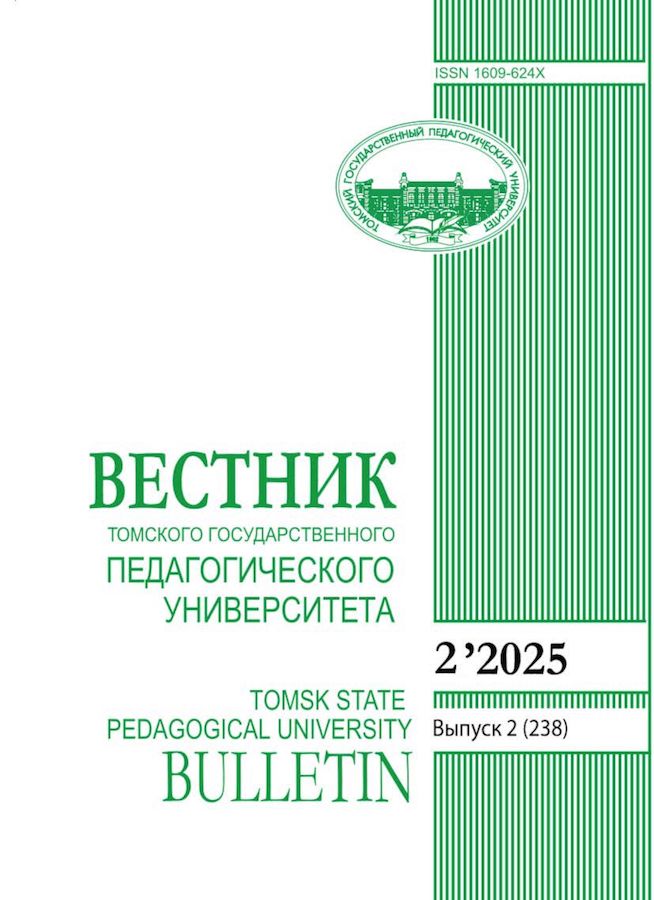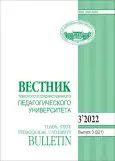ЖАНР EDITORIAL В АНГЛОЯЗЫЧНОЙ КАЧЕСТВЕННОЙ ПРЕССЕ
- Авторы: Никонова Е.А.1
-
Учреждения:
- Московский государственный институт международных отношений (университет) МИД Российской Федерации
- Выпуск: № 3 (2022)
- Страницы: 56-66
- Раздел: РОМАНСКИЕ И ГЕРМАНСКИЕ ЯЗЫКИ
- URL: https://journal-vniispk.ru/1609-624X/article/view/268930
- DOI: https://doi.org/10.23951/1609-624X-2022-3-56-66
- ID: 268930
Цитировать
Полный текст
Аннотация
Ключевые слова
Об авторах
Екатерина Андреевна Никонова
Московский государственный институт международных отношений (университет) МИД Российской Федерации
Email: ekatnikon2014@yandex.ru
кандидат филологических наук, старший преподаватель пр. Вернадского, 76, Москва, Россия, 119454
Список литературы
- Firmstone J. The Editorial Production Process and Editorial Values as Influences on the Opinions of the British Press Towards Europe // Journalism Practice. 2008. № 2. P. 212–229.
- Firmstone J. Editorial journalism and newspapers’ editorial opinions. 2019. URL: https://www.researchgate.net/publication/339886788_Editorial_journalism_and_newspapers’_editorial_opinions (дата обращения: 28.11.21).
- Tirkkonen-Condit S. Argumentation in Finnish vs. English and German Editorials // Text, interpretation, argumentation. Hamburg: Helmut. 1989. P. 173–181.
- Le E. Editorials and the Power of Media : Interweaving of Socio-Cultural Identities. John Benjamins Publishing Co. 2010. URL: http://bibliocatalog.mgimo.ru:2079/login.aspx?direct=true&db=e000xww&AN=309457&site=ehost-live (дата обращения: 28.11.2021).
- Blankenship J., Mendez-Mendez S., Guen Kang J., Giodano J. Initial construction of Ferraro in newspaper editorials // Journalism Quarterly. 1986. № 68. P. 378–382.
- Hannah J., Gandy O. J. Editorial opinion and racial profiling: Coming to terms with DWB // Paper submitted to the Political Communication Division for the 50th Annual Meeting of the International Communication Association, Acapulco, Mexico. 2000. P. 1–23.
- Myers D. S. Editorials on the economy in the 1980 presidential campaign // Journalism Quarterly. 1982. № 59. P. 414–419.
- Richardson J. D., Lancendorfer K. M. Framing affirmative action: The influence of race on newspaper editorial responses to the University of Michigan case // Politics. 2004. № 9 (4). P. 74–94.
- Alvarado S. J. Understanding editorial text. Kluwer Acad. Pubs. Group, 1990. 296 p.
- Gruner C. R. A quasiexperimental study of the effect of humor preference and other variables on understanding/appreciation of editorial satire // Psychological Reports. 1989. № 65. P. 967–970.
- Krueger E., Fox J. D. The Effects of Editorials on Audience Reaction to Television Newscasters // Journalism Quarterly. 1991. 68 (3). P. 402–411.
- Bolivar A. The structure of newspaper editorials // Advances in written text analysis. London: Routledge, 1994. P. 276–294.
- Liddle D. Who invented the “leading article”? URL: https://www.researchgate.net/profile/Dallas-Liddle (дата обращения: 28.11.2021).
- Dijk van. T. Opinions and ideologies in editorials. URL: http://www.discursos.org/unpublished%20articles/Opinions%20and%20ideologies%20in%20editorials.htm (дата обращения: 28.11.2021).
- Бахтин М. Проблема речевых жанров. URL: http://www.philologos.narod.ru/bakhtin/bakh_genre.htm (дата обращения: 28.11.21).
- Miller C. Genre as Social Action // Quarterly Journal of Speech. 1984. 70. P. 151–167.
- Никонова Е. А. Объективная и субъективная модальность в англоязычном политическом дискурсе (на примере аналитических статей и политических эссе): дис. … канд. филол. наук. М., 2020. 204 с.
- Werkmeister L. The London daily press, 1772–1792. Lincoln: University of Nebraska, 1963. URL: https://archive.org/details/londondailypress0000werk (дата обращения: 28.11.2021).
- Schudson M. Discovering the news: A social history of American newspapers. New York, NY: Basic Books. 1978. 119 p.
- Conboy M. The print industry-yesterday, today and tomorrow: An overview // Print journalism: A critical introduction / ed. R. Keeble. Oxford, U.K.: Routledge, 2005. P. 4–8.
- Druckman J. N., Parkin M. The impact of media bias: How editorial slant affects voters // The Journal of Politics. 2005. № 67 (4). P. 1030–1049.
- Norris P. On message: Communicating the campaign, Thousand Oaks, CA; London, U.K.: SAGE. 1999. 224 p.
- Kahn K. F., Kenney P. J. The slant of the news: How editorial endorsements influence campaign coverage and citizens’ views of candidates // American Political Science Review. 2002. № 96 (2). P. 381–394.
- Hallock S. M. Editorial and opinion: The dwindling marketplace of ideas in today’s news, Westport, CT: Praeger. 2007. 256 p.
- Турчинская Э. И. Соотношение заголовка и текста в газетно-публицистическом стиле. М.: УОР, 1984. 52 с.
- Katajamäki H. An Editorial and its Intertextual Links: Case Study of a Finnish Business Newspaper. URL: https://www.researchgate.net/publication/267545802_An_Editorial_and_its_Intertextual_Links_Case_Study_of_a_Finnish_Business_Newspaper (дата обращения: 28.11.2021).
- Nanri K. An Anatomy of the homogeneity and innocuousness of Japanese editorials. 2004. URL: https://www.semanticscholar.org/paper/An-Anatomy-Of-The-Homogeneity-And-Innocuousness-Of-Nanri/dffb50ba3021a4b3288c5064bc0aac7fcef27ac6 (дата обращения: 28.11.2021).
- Martin J. R. Factual writing: exploring and challenging social reality]. Victoria: Deakin University Press, 1985. URL: https://clck.ru/Z5ka4 (дата обращения: 28.11.2021).
- Bonyadi A. The rhetorical properties of the schematic structures of newspaper editorials: A comparative study of English and Persian editorials. Discourse & Communication // DISCOURSE COMMUN. 2010. № 4. P. 323–342.
- Bonyadi A., Samuel M. Headlines in Newspaper Editorials. A Contrastive Study // SAGE Open. 2013. Vol. 3, № 10.
- Hall D. R. Materials production: theory and practice // Innovations in English language teaching. London, England: Routledge, 2001. P. 229–239.
- Никонова Е. А. Тенденции экспрессивизации и диалогизации в газетном стиле (на примере новостного блока англоязычных газет) // Научный диалог. 2020. № 9. С. 128–143. doi: 10.24224/2227-1295-2020-9-128-143
- Zappettini F., Ponton D. M., Larina T. V. Emotionalisation of contemporary media discourse: a research agenda // Russian Journal of Linguistics. 2021. № 3. P. 586–610. DOI: https://doi.org/10.22363/2687-0088-2021-25-3-586-610
- Cambridge Dictionary. URL: https://dictionary.cambridge.org/ (дата обращения: 28.11.2021).
- Ларина Т. В. Категория вежливости и стиль коммуникации. Сопоставление английских и русских лингвокультурных традиций. М.: Рукописные памятники Древней Руси, 2009. 384 c.
- Biber D., Susan C. Register, genre and style. Cambridge: Cambridge University Press, 2009. 344 p.
- Клушина Н. И. Стратегия именования в воздействующей речи // Вестник Московского университета. Сер. 10, Журналистика. 2006. № 5. С. 49–65.
- Fairclough N. Discource and social change. Cambridge: Polity Press. 1992. 259 p.
Дополнительные файлы







